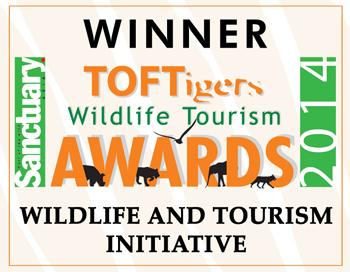Archives
Archives
1. DAMS FOR COORG OR DAMNING OF COORG?
Much debate has been going on in Coorg about the building of dams in the district, and more specifically at several sites on the Barapolay River located inside the Oorti and Kerti reserve forests, which form part of the core area of the Brahmagiri Wildlife Sanctuary of the Western Ghats/Nilgiri Mountains, as well as the drawing of high tension electricity cables through some of Kodagu’s pristine virgin forest areas. While the residents of Coorg may benefit from receiving more electricity from the power plants, (although even this is in question since it is rumored that both the water and electricity from the dams will be given to Kerala, and the high tension wires to be drawn are specifically for delivering electricity to Kerala with no benefit to the residents of Coorg at all), additional electricity can be delivered and generated in far better, less environmentally destructive ways—such as wind power, ocean thermal power, and solar power plants like those in the USA, Europe, and even in parts of Northern India—than felling over 4000 trees in virgin forest for overhead cables or building a series of no less than four dams in the middle of a wildlife sanctuary.
Read More2. THE DAMNING OF COORG CONTINUES
Please note that all the information contained in our four-part article “Dams for Coorg or the Damning of Coorg” is based on facts, and these facts have been taken from studies made by some of the most prestigious and experienced bodies from around the world with regard to dams and their environmental, social and economic impact. The following is a list of just some of the agencies whose work was used:
From the Federal Government of the United States of America:
- The US. Dept. of the Interior,
- The US Dept. of Fish and Wildlife Services,
- The US. Dept. of Reclamation,
3. WATER FOR LIFE—DECADE FOR ACTION
In December 2003, in recognition of the scarcity of fresh water around the globe, and the need to conserve and preserve vital water sources, the United Nations proclaimed the years between 2005 and 2015 “The Decade for International Action” with the theme “Water for Life,” recognizing the fact that without water, there is no life. The 22nd of March 2005—World Water Day—marks the beginning of this ‘Decade of Action,’ a decade dedicated to protecting and safeguarding our rapidly vanishing watersheds, and defending them from desecration and destruction. These watersheds are the forests of the world, especially equatorial rainforests like those found in Coorg and the rest of the Western Ghats.
Read More4. PROTECTING THE SACRED JEWELS OF KODAGU
The people of Kodagu district should be congratulated and applauded for their determination and commitment to protect the forests and wildlife of Kodagu from those who threaten to destroy them. Their determination to uphold the traditions of their forefathers in preserving our forests should be commended—not ridiculed with disparaging remarks, like those made by proponents for the dams in recent newspaper articles.
The residents of Kodagu have recognized and embraced the wisdom their forefathers knew: that the true wealth of this area lies in the lush green canopy of forests that surround our plantations and villages. For it is from our forests that our life-sustaining water flows forth; it is from our forests that cool, fresh unpolluted air is generated; it is from our forests that our agricultural lands have been made fertile and our crops protected by such animal ‘friends’ as drongos, woodpeckers and other birds—the best pest controllers any agriculturalist can have; it is our forests that have given us all of our wealth—individually and collectively. And it is these same forests that will once again give us our wealth through Eco-Tourism, Tree Supports, and grants from the Karnataka State Biodiversity Project, as discussed in earlier articles.
Read More
